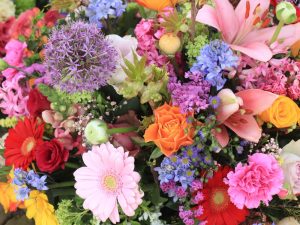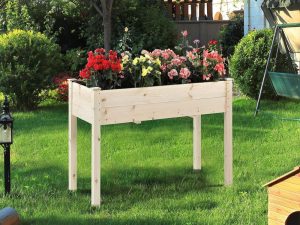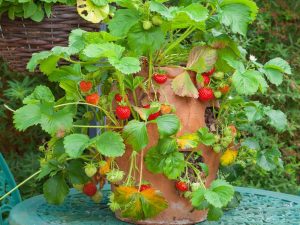Last Updated on June 26, 2024 by teamobn
Save for the azure of the oceans and the heavens, blue is a rare color in nature. In 17th Century Europe, when Michelangelo Merisi da Caravaggio and Peter Paul Rubens were painting masterworks, ultramarine blue pigment was a precious commodity.
The lapis lazuli which yielded the pigment was mined in faraway Afghanistan and cost more than its weight in gold. That is why lesser artists had to use cheaper, far inferior pigments to approximate the color.
Blue flowers like the love-in-a-mist are rare, too, because the chemistry that creates this pigment in the world of plants is delicate and complex. The plants that do achieve it often use the same compounds that usually give flowers and fruit red, purple, and black shades.
Nature alters them through chemical trickery – often by increasing the pH in their cells – to make them appear blue.
Love-in-a-mist, Nigella damascena, is a charming, old-fashioned flower that blooms white, pink, purple, and – quite famously – blue in spring and early summer. But the genus name Nigella comes from the Latin niger, which refers to the plant’s black seeds.
The plant comes from southern Europe and northern Africa. In its native habitat, this annual garden plant of the buttercup family grows in fields, along roadsides, and in rocky or waste ground.
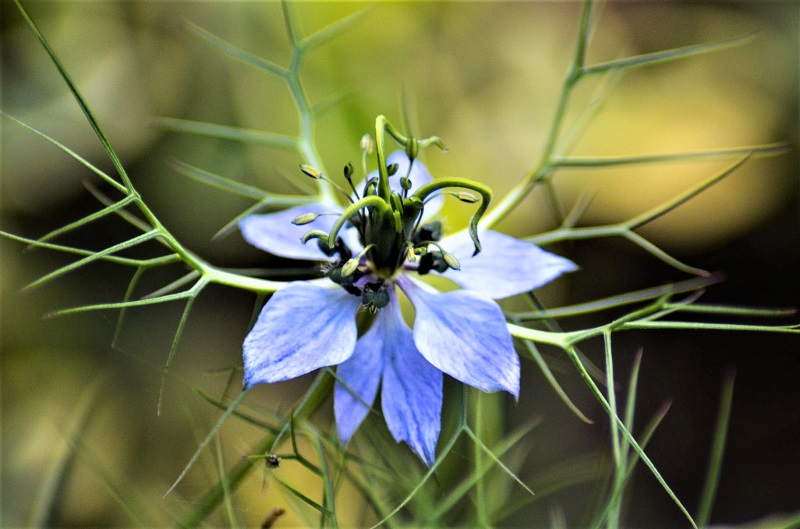
A Misty Blue Garden Standout
Contents
Love-in-a-mist grows a stately 15 to 24 inches high and can spread a canopy of delicate, slender leaves 10 or 12 inches wide when not crowded. The plant’s leaves resemble those of fennel, giving it a unique and airy appearance. This makes love-in-a-mist a visually appealing addition to any garden, providing texture and interest even when not in bloom.
When flowering, love-in-a-mist will issue a filigree shroud of green sepals to surround the blooms, hence its evocative name. The delicate, lace-like sepals enhance the plant’s ethereal beauty, creating an almost mist-like effect around the flowers. Each bloom is about 1 ½ inches across, showcasing the plant’s exquisite charm. The flowers come in shades of white, pink, purple, and the famous misty blue, adding a pop of color to the garden.
Each flower is followed by an attractive, balloon-shaped “seedpod,” which is actually an inflated capsule of five fused true seedpods. The pods can grow up to two inches long and are green with purple or bronze stripes, making them striking features in their own right. These seedpods add an additional layer of visual interest and can be used in dried floral arrangements.
Love-in-a-mist looks ravishing in the garden even when not in bloom, with its handsome foliage and eye-catching seedpods, which remain after flowering. The plant’s delicate, feathery leaves create a lush, green backdrop, while the seedpods provide long-lasting ornamental value. Given its striking appearance, the plant is also surprisingly easy to grow, making it an excellent choice for both novice and experienced gardeners. Its ability to thrive with minimal care and its resilience to pests and diseases make it a reliable and beautiful addition to any garden landscape.
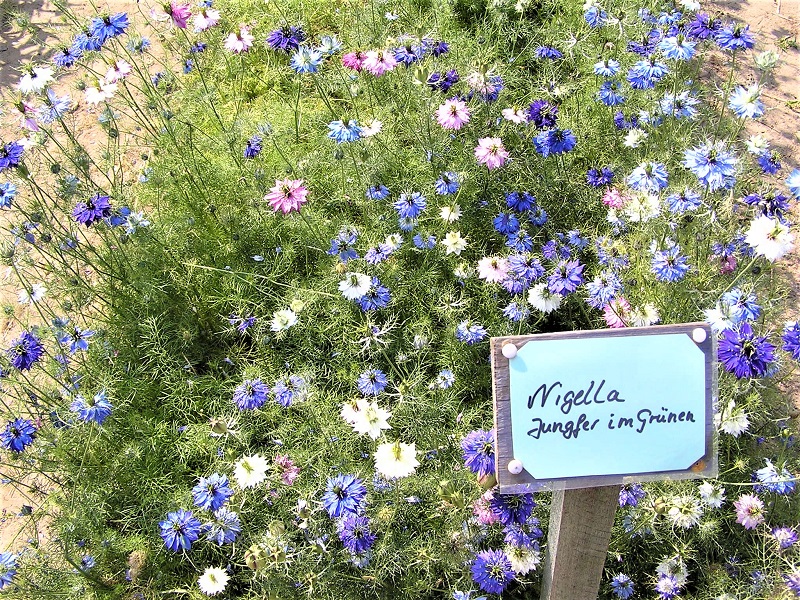
How to Grow Love-in-a-Mist
Love-in-a-mist (Nigella damascena) is a charming annual flower known for its delicate, feathery foliage and striking blooms. This plant is easy to grow and adds a touch of old-fashioned beauty to any garden. Follow these steps to cultivate love-in-a-mist successfully.
Step 1: Selecting the Right Location Love-in-a-mist thrives in full sun. Choose a location that receives at least six hours of direct sunlight each day. Ensure the soil is well-drained and fertile. The plant prefers neutral pH soil but can adapt to slightly acidic or alkaline conditions.
Step 2: Preparing the Soil Prepare the garden bed by removing weeds, rocks, and debris. Loosen the soil to a depth of about 12 inches and incorporate organic matter, such as compost or well-rotted manure. This will improve soil fertility and drainage, providing an ideal environment for love-in-a-mist.
Step 3: Sowing the Seeds Sow love-in-a-mist seeds directly in the garden bed as soon as the soil can be worked in early spring. Scatter the seeds evenly and press them gently into the soil, about 1/8 inch deep. There’s no need to cover them with soil. Keep the soil consistently moist until the seeds germinate, which usually takes two to three weeks.
Step 4: Thinning the Seedlings Once the seedlings have sprouted, thin them to ensure proper spacing. Space the plants 6 to 12 inches apart to allow sufficient room for growth and airflow. This helps prevent overcrowding and reduces the risk of disease.
Step 5: Watering and Feeding Water love-in-a-mist regularly, especially during dry periods. The soil should remain evenly moist but not waterlogged. Mulch around the plants to retain moisture and suppress weeds. Fertilize with a balanced, all-purpose fertilizer once a month during the growing season to promote healthy growth and abundant blooms.
Step 6: Caring for the Plants Love-in-a-mist requires minimal care once established. Remove spent blooms to encourage continuous flowering. If you wish to collect seeds, allow some flowers to mature and form seed pods. Harvest the pods when they turn brown and dry them in a cool, dark place.
Step 7: Managing Pests and Diseases Love-in-a-mist is relatively pest-free. However, keep an eye out for aphids and slugs, which can occasionally be a problem. Use organic or chemical treatments as necessary. Ensure good air circulation around the plants to prevent fungal diseases.
Step 8: Succession Planting To enjoy continuous blooms, sow love-in-a-mist seeds every three weeks throughout the growing season. This will provide a steady supply of flowers and maintain the plant’s visual appeal in your garden.
Step 9: Overwintering In milder climates, love-in-a-mist can be sown in late summer or fall for early spring blooms. The seeds will overwinter and germinate when temperatures warm up. Protect the seedlings from harsh winter conditions with a light mulch.
By following these steps, you can successfully grow love-in-a-mist and enjoy its delicate beauty in your garden. This versatile plant will reward you with charming flowers and striking seed pods, making it a delightful addition to any landscape.
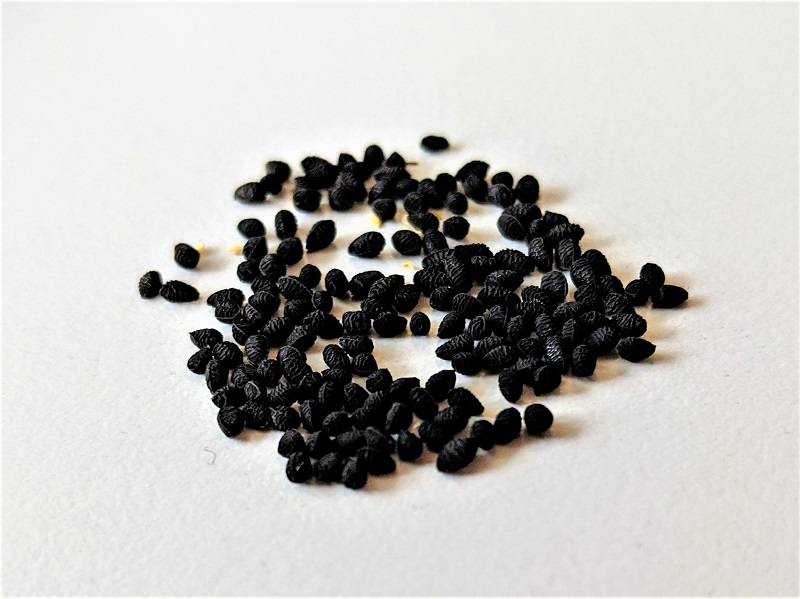
Caring for Your Plants and Blooms
Love-in-a-mist (Nigella damascena) is a charming and easy-to-grow annual that brings a touch of elegance to any garden. To ensure your love-in-a-mist thrives and produces beautiful blooms, follow these care guidelines.
Short Bloom Period and Successive Plantings
Love-in-a-mist has a relatively short bloom period, lasting only a month or two. For continuous blooms throughout the summer, make successive plantings every three weeks. Start by sowing seeds in early spring, and the plants should begin blooming about three months after planting. This approach ensures a steady supply of flowers and maintains the plant’s visual appeal in your garden.
Managing Self-Sown Seedlings
Once your love-in-a-mist plants begin to scatter seeds on their own, you won’t need to continue sowing. However, it’s essential to thin any new seedlings to prevent overcrowding. Overcrowded plants can lead to poor air circulation and increased susceptibility to disease. Thin the seedlings to maintain proper spacing and ensure healthy growth.
Deadheading for Prolonged Flowering
Deadheading, or removing spent blooms, can prolong the flowering period of love-in-a-mist. This practice encourages the plant to produce more flowers. However, deadheading will also remove the beautiful seedpods that follow the blooms. If you wish to enjoy the ornamental seedpods, allow some flowers to mature and form pods.
Spring-Seeding and Seasonal Planting
Spring-seeding often produces smaller plants with smaller flowers. In many regions, you can also sow love-in-a-mist seeds in summer or fall. This method allows the seedlings to overwinter and grow earlier and larger the following spring. This approach can result in more robust plants and a more extended bloom period in the spring.
Pest and Disease Management
The beautiful N. damascena is virtually problem-free once established. The plant’s short lifespan and natural resilience make it less susceptible to pests and diseases. Ensure good air circulation around the plants to prevent any potential fungal issues. Regularly inspect your plants for signs of pests, such as aphids or slugs, and take appropriate action if necessary.
Harvesting and Drying Seed Pods
To dry the seed pods of love-in-a-mist, harvest them while the stripes are still visible. Cut the pods from the plant and hang them upside down in a dry, dark, airy place. Placing the pods in paper bags can help contain the seeds as they dry and fall out. Ensure the drying area has good ventilation to prevent mold growth.
Using Seed Pods in Arrangements
The decorative green and burgundy seed pods of love-in-a-mist can be used in both fresh and dried floral arrangements. To create long-lasting cut flowers, remove the leaves from the lower part of the stem before arranging. This helps the flowers retain moisture and prolongs their vase life. The dried seed pods add a unique and artistic touch to dried arrangements, wreaths, and other crafts.
By following these care tips, you can ensure your love-in-a-mist plants remain healthy and vibrant. Their delicate blooms and striking seed pods will enhance your garden’s beauty and provide a continuous display of color and charm throughout the growing season.

Conclusion
Growing love-in-a-mist plants adds a touch of elegance and charm to any garden. With proper care and attention, these beautiful flowers will reward you with their delicate blooms and unique seed pods. Enjoy the simplicity and beauty of love-in-a-mist as it enhances your garden throughout the seasons.


